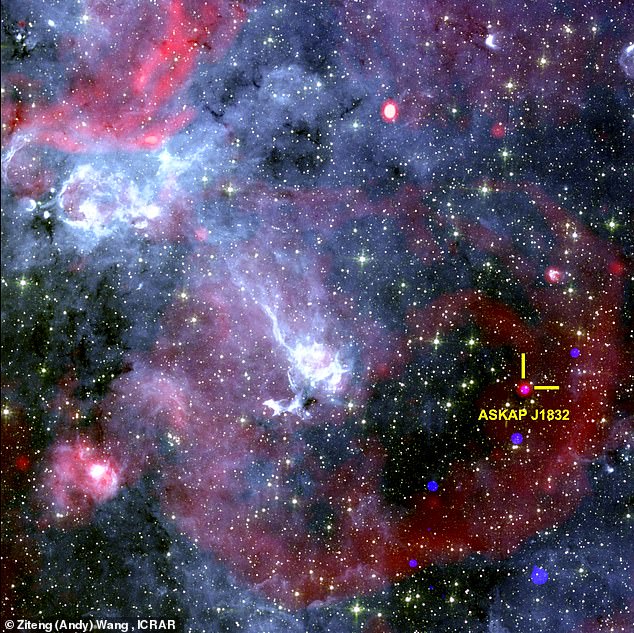
Cosmic Enigma: Radio Waves and X-Rays from Mysterious Object Stump Scientists, Sparking Alien Contact Debate
Mysterious Cosmic Object Defies Known Physics
(Approx. 600 words)
In the depths of space, 14,700 light-years from Earth, an enigmatic celestial object named ASKAP J1832-0911 emits synchronized radio and X-ray pulses every 44 minutes. This marks the first detection of a long-period transient (LPT) producing X-rays, baffling scientists as it defies existing astrophysical models.
Unprecedented Signals
Discovered in the densely packed Galactic Plane, ASKAP J1832-0911 unleashes two-minute bursts of radiation at precise intervals. LPTs—objects emitting sporadic radio waves—were first identified in 2022, but none have been recorded emitting X-rays until now. “This object challenges our understanding of physics,” said Dr. Andy Wang of Curtin University, whose team made the discovery. Existing theories, including magnetars (highly magnetized neutron stars) or binary systems involving white dwarfs, fail to fully explain the dual emissions.
[Image: Artist’s impression of a magnetar, a potential candidate for the object.]
A Serendipitous Discovery
Using Australia’s ASKAP radio telescope, the team detected the radio pulses. By chance, NASA’s Chandra X-ray Observatory simultaneously observed the same region, uncovering matching X-ray signals. “It’s like finding a needle in a haystack,” said Wang, noting the rarity of overlapping observations due to Chandra’s narrow field of view. The synchronized 44-minute cycle in both wavelengths is unprecedented, offering vital clues about the object’s structure.
[Image: ASKAP radio telescope in Australia, key to detecting the radio emissions.]
Theories and Implications
While magnetars remain a leading hypothesis, their typical rapid spin (seconds) contrasts with this object’s 44-minute cycle. Another possibility involves a binary system where a white dwarf’s magnetic interactions trigger periodic bursts. However, neither model explains the combined radio and X-ray activity. “This could redefine stellar evolution or introduce new physics,” Wang added. The co-emission suggests a highly organized magnetic field and compact structure, potentially indicative of a new celestial class.
[Image: Radio/X-ray light curves showing synchronized pulses.]
Broader Cosmic Impact
Researchers emphasize the discovery’s broader significance. “Finding one such object implies more exist,” said Prof. Nanda Rea, co-author of the study. The X-ray component provides critical insights into LPTs’ nature, which until now were studied solely via radio waves. Future observations aim to pinpoint the object’s origins, possibly unlocking mysteries of extreme cosmic environments.
[Image: NASA’s Chandra X-ray Observatory, which detected the emissions.]
Why It Matters
ASKAP J1832-0911’s defiance of known physics highlights gaps in our cosmic knowledge. Its discovery underscores the importance of multi-wavelength astronomy and serendipity in unraveling the universe’s secrets. As telescopes like ASKAP and Chandra continue exploring, more such anomalies may emerge, reshaping our understanding of celestial phenomena.
Key Facts
- Distance: 14,700 light-years
- Cycle: 44 minutes (2-minute active phase)
- Unique Trait: First LPT emitting X-rays
- Potential Identity: Magnetar, white dwarf binary, or new class
- Significance: Challenges existing astrophysical models*
This enigmatic object reminds us the universe still holds countless unsolved mysteries, waiting to rewrite the rules of physics.


